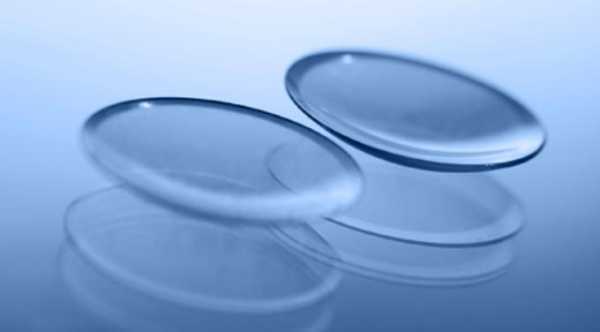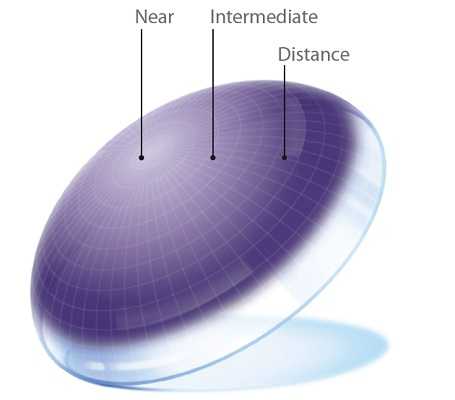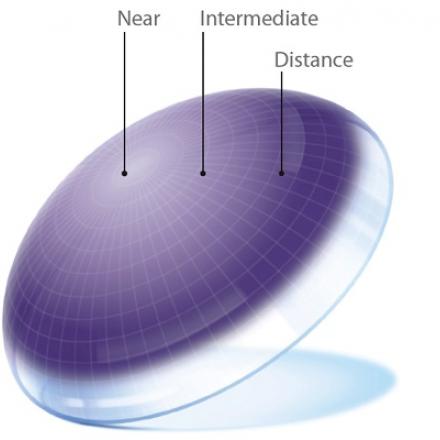
Monovision Contact Lens
Monovision contact lens is the most common way of correction for presbyopia. Many patients show a strong preference for monovision over bifocal soft lenses with success rate of 50% to 70% and in order to monovision correction to be successful, the brain must suppress blurred image from the defocused eye.
In case the patient has refractive error, one eye will use contact lens that correct for distance while the other eye will use contact lens that correct for near. In case the patient has no refractive error, only one contact lens will be used which will be for near correction.
Usually the dominant eye is used for distance correction while the non-dominant eye is used to correct for near but choosing the dominant eye for distance correction does not necessary means better vision.
Sometimes dominant eye is used for near correction due to occupational demands and sometimes the left eye is used for distance correction especially for drivers to be able to use the side-view mirror.
There are several tests can be used to determine the dominant eye, these test are:
1- Sighting dominance test
The patient is asked to do O.K with his hand and he focuses through the hole for a distance object then he asked to alternate cover his eye. The eye that is found to be alignment with the distance object is the dominant eye
2- Swinging-plus test
The patient will hold a plus lens that is equal for near correction power is used infront one eye and he is asked to walk around the room while covering one eye and repeat this while covering the other eye. The eye most comfortable with the lens is designated for near vision.
Monovision contact lens correction may decrease or impair stereoscopic depth which can affect the patient ability to drive in which 30% of monovision patients report glares while driving at night and patients should be strongly encouraged to wear driving spectacles which is minus power lens over the near eye or the patient can use a second distance contact lens. Contrast sensitivity is also decrease to some extent.
Adaptation time for monovision contact lens is about 2-3 weeks but some patients can take up to 6 weeks to fully adapt. During this period the patient can complain of blurred vision and eye strain with headache sometimes which can be normal through adaptation period.





